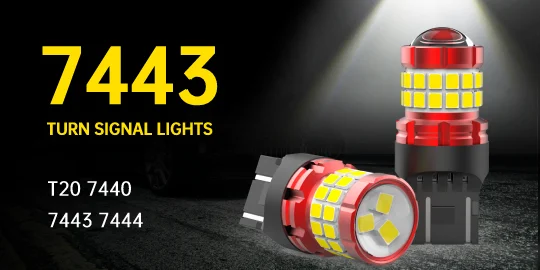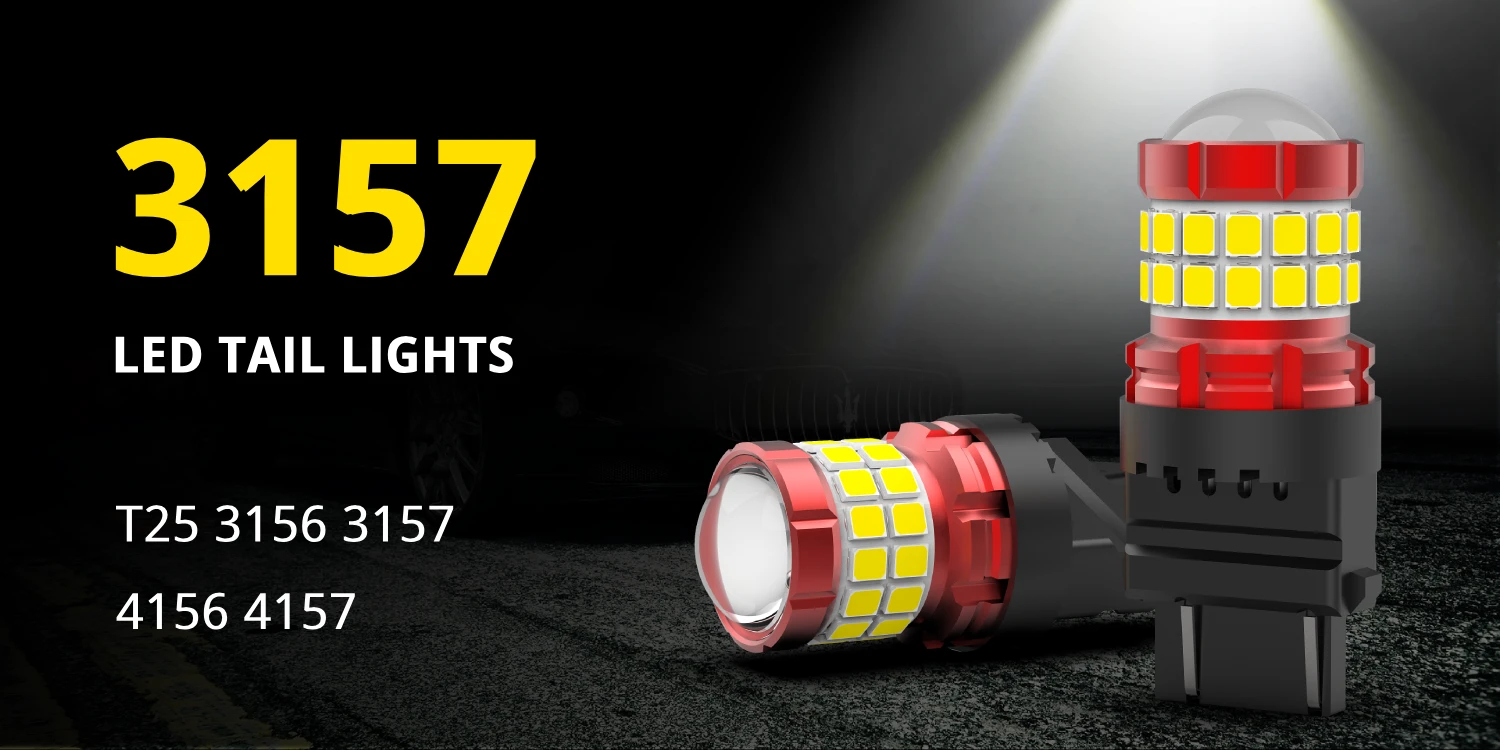

When upgrading your vehicle’s lighting, choosing the right LED bulbs is crucial. Two commonly used bulb types for tail lights, brake lights, and turn signals are the 7443 bulbs and 3157 bulbs. While they may appear similar, they have distinct differences that can affect compatibility and performance.
Table of Contents
Physical Appearance and Similarities
At first glance, 7443 and 3157 bulbs share several physical characteristics that make them easily confused:
- Both use the BA15S (1156) base type
- Suitable for both tail and brake light functions
Key Differences Between 7443 VS 3157 Bulbs
1. Filament Configuration: Both bulbs are dual-filament, but their filament arrangements differ.
- 7443 bulbs have offset filaments designed for specific light patterns
- 3157 bulbs feature a different filament spacing that affects the beam spread
2. Common Applications: While both serve similar functions, they’re typically found in different applications.
- 7443 bulbs are commonly used for:
- Brake lights
- Turn signals
- Tail lights
- 3157 bulbs are often specified for:
- Rear position lights
- License plate illumination
- Some turn signal applications
Conclusion: Making the Right Choice
While 7443 and 3157 bulbs may look similar and even fit the same sockets, they are not identical. The 7443 generally offers higher brightness suitable for brake and turn signal applications, while the 3157 is typically used for less demanding lighting positions. When replacing bulbs:
- Always use the type specified by your vehicle manufacturer when possible
- If considering an alternative, ensure it meets all electrical and safety requirements
- For LED upgrades, choose bulbs specifically designed for your application
- Consider brightness, color, and heat management in your decision
Understanding these differences will help you maintain optimal lighting performance and safety on the road. Whether you’re replacing a burnt-out bulb or upgrading to LED technology, making an informed choice ensures your vehicle’s lights function as intended.
